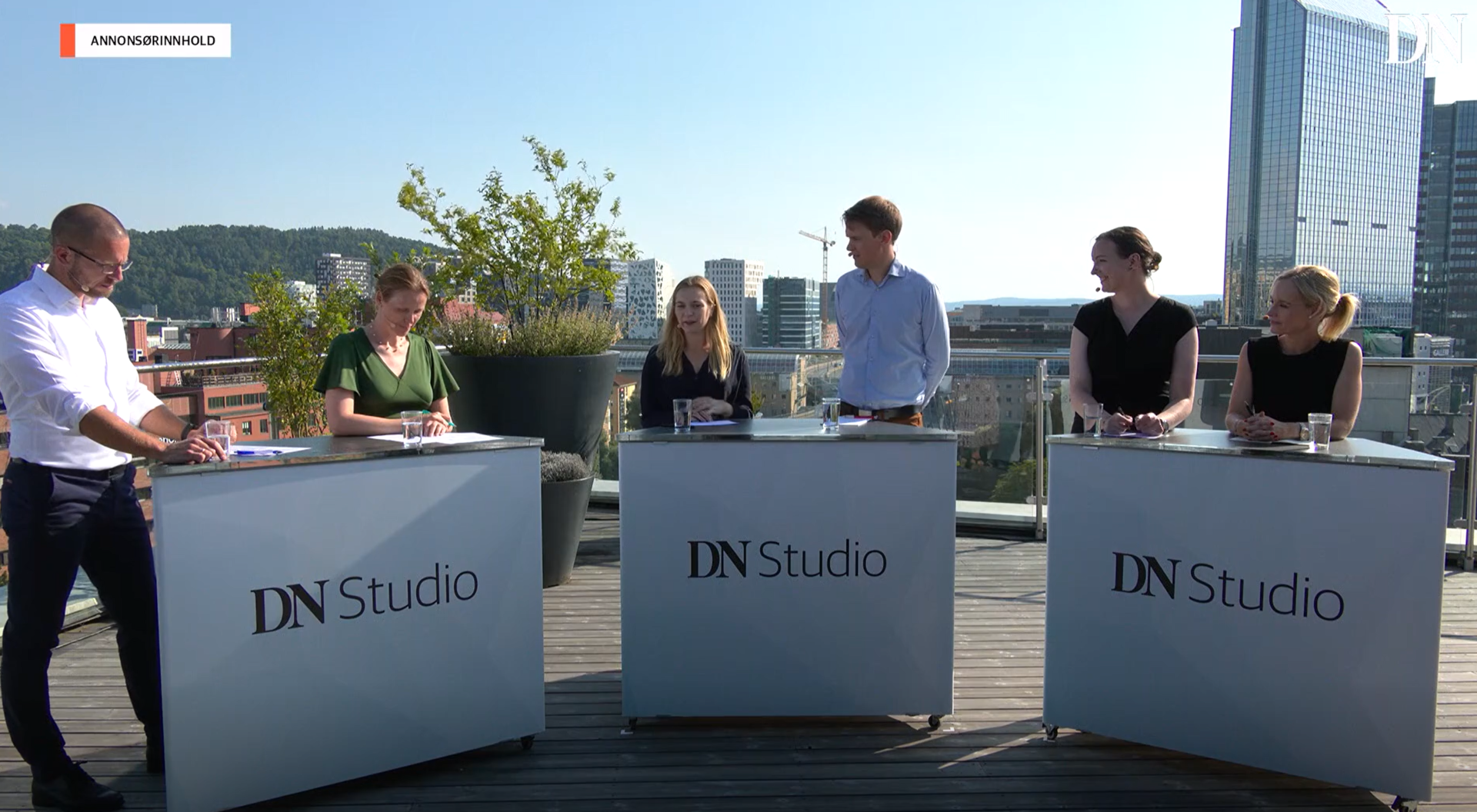QUINT Deputy Director Marte Blikstad-Balas was invited to speak about the use of digital technology in schools during the recent school closures as part of a panel talk at DN Studio on Wednesday 12 August. DN Studio, hosted by the Norwegian newspaper Dagens Næringsliv, covers political and societal issues and was broadcast live during the week 33.
The other guests included Norwegian Parliamentary representatives Torstein Tvedt Solberg (The Labour Party) and Mathilde Tybring-Gjedde (The Conservative Party), Director of Education Marte Gerhardsen at the Education Agency in Oslo, Geir Sand Nilsen of the "Corona group for digital teachers"- initiative, Ingrid Somdal-Åmodt Vinje from Storyboard, and Vegard Bjerkvik from Elkjøp Bedrift.

Drawing on the results from a recent survey with parents, Blikstad-Balas highlighted that there were big differences in how prepared schools were for the digital home schooling. This resulted in a great variety when it comes to what education students had access to during the weeks with closed schools. For example, how much digital contact the oldest and youngest students had with their teachers, and with the rest of the class, varied significantly. In fact, the youngest students had the least contact with their teacher.
Blikstad-Balas pointed out that the social possibilities of the digital platforms could have been used more to facilitate joint discussions and collaboration in real time. With some exceptions, the digital technologies were mostly used to provide students with a number of individual tasks they should do at home. This sort of home-schooling was also more demanding for the parents who had to follow up and assist with the tasks.
It seems clear now that even though the Covid-19 crisis measures pushed the use of digital solutions in teaching, that in itself didn’t necessarily mean that technology was used in particularly innovative ways. This corresponds with the findings of another QUINT study that found the use of technology in the classroom limited and quite traditional. There isn’t any clear correlation between the use of technology and innovation. Blikstad-Balas ended with emphasising the importance of a pedagogical perspective;
– In order to choose what technologies are used and how, it is important to first reflect on what it is that we wish for the students to learn and what role digital technologies should play in that.
The whole panel talk (in Norwegian) is available to view below.
